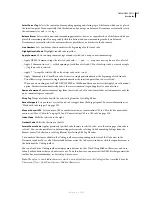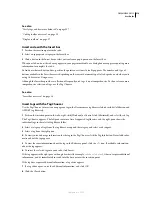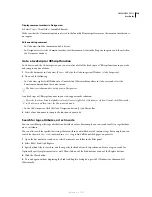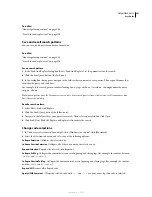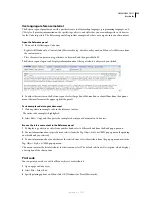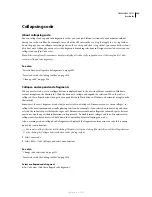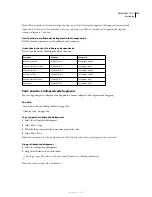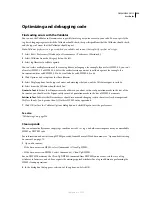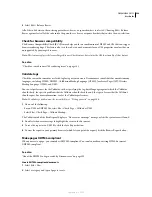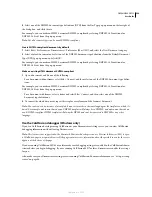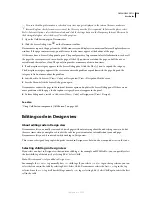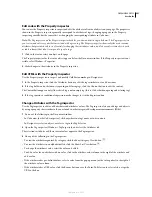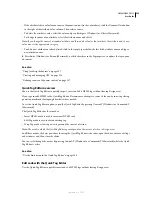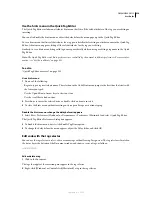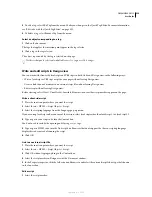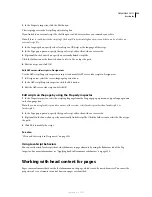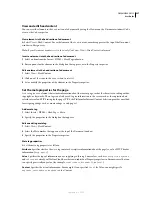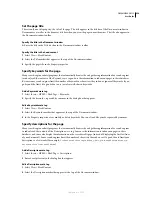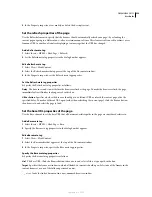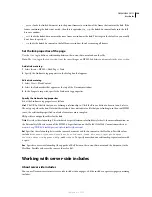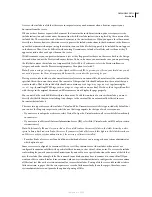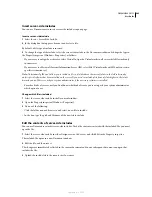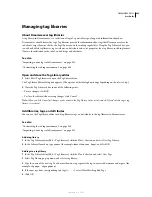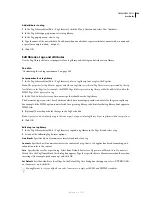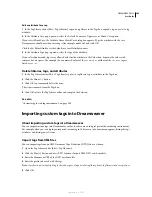
DREAMWEAVER CS3
User Guide
330
To ensure the debug information is refreshed every time a page is displayed in the internal browser, make sure
Internet Explorer checks for newer versions of the file every time the file is requested. In Internet Explorer, select
Tools > Internet Options, select the General tab, and click the Settings button in the Temporary Internet Files area. In
the Settings dialog box, select the Every Visit to Page option.
1
Open the ColdFusion page in Dreamweaver.
2
Click the Server Debug icon
on the Document toolbar.
Dreamweaver requests the page from the ColdFusion server and displays it in an internal Internet Explorer browser
window. If the page contains errors, possible causes for the errors appear at the bottom of the page.
At the same time, a Server Debug panel opens. The panel provides a large amount of useful information, such as all
the pages the server processed to render the page, all the SQL queries executed on the page, and all the server
variables and their values, if any. The panel also provides a summary of execution times.
3
If an Exceptions category appears in the Server Debug panel, click the Plus (+) icon to expand the category.
The Exceptions category appears if the server encountered a problem or problems with the page. Expand the
category to find out more about the problem.
4
Switch back to Code view (View > Code) or Design view (View > Design) and fix the error.
5
Save the file and click the Server Debug icon again.
Dreamweaver renders the page in the internal browser again and updates the Server Debug panel. If there are no
more problems with the page, the Exceptions category does not reappear in the panel.
6
To leave debug mode, switch to Code view (View > Code) or Design view (View > Design).
See also
“Using ColdFusion components (ColdFusion)” on page 665
Editing code in Design view
About editing code in Design view
Dreamweaver lets you visually create and edit web pages without worrying about the underlying source code, but
there are times when you might need to edit the code for greater control or to troubleshoot your web page.
Dreamweaver lets you edit some code while working in Design view.
This section is designed for people who prefer to work in Design view, but who also want quick access to the code.
Selecting child tags in Design view
If you select an object in Design view that contains child tags—for example, an HTML table—you can quickly select
the first child tag of that object by selecting Edit > Select Child.
Note:
This command is only enabled in Design view.
For example, the
<table>
tag normally has
<tr>
child tags. If you select a
<table>
tag in the tag selector, you can
select the first row in the table by selecting Edit > Select Child. Dreamweaver selects the first
<tr>
tag in the tag
selector. Since the
<tr>
tag itself has child tags, namely
<td>
tags, selecting Edit > Select Child again selects the first
cell in the table.
September 4, 2007


